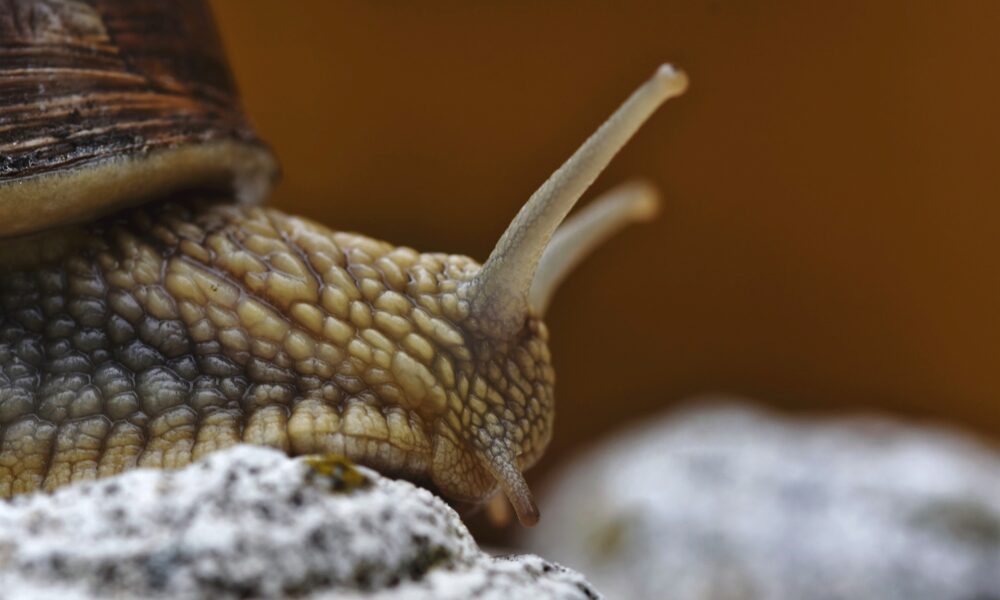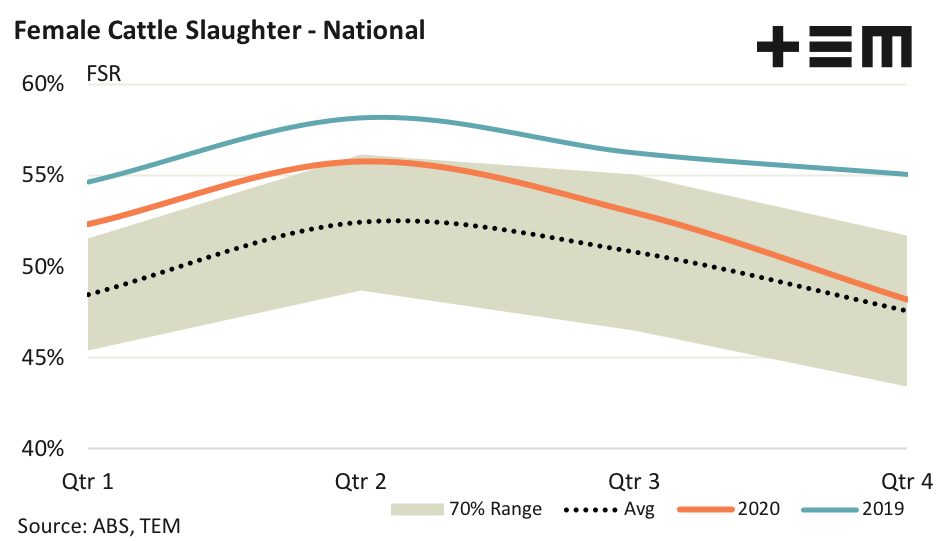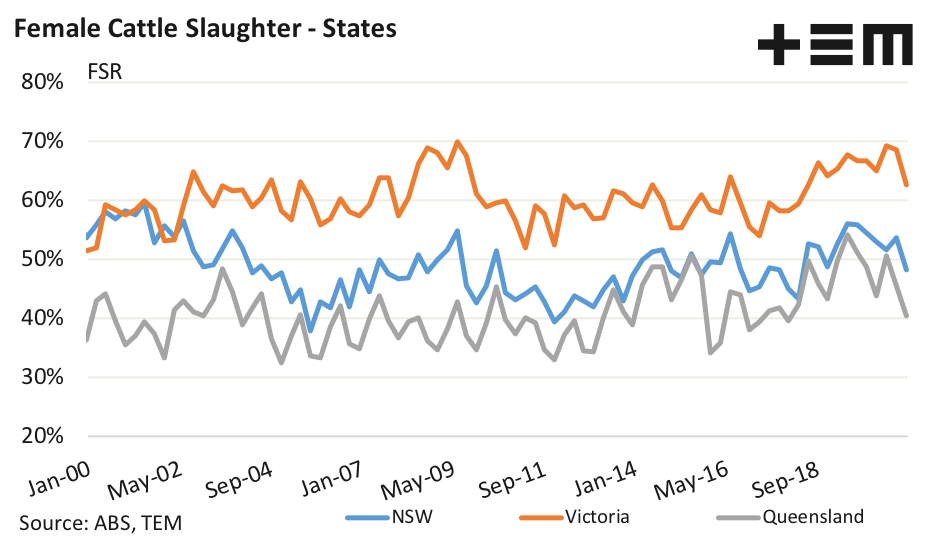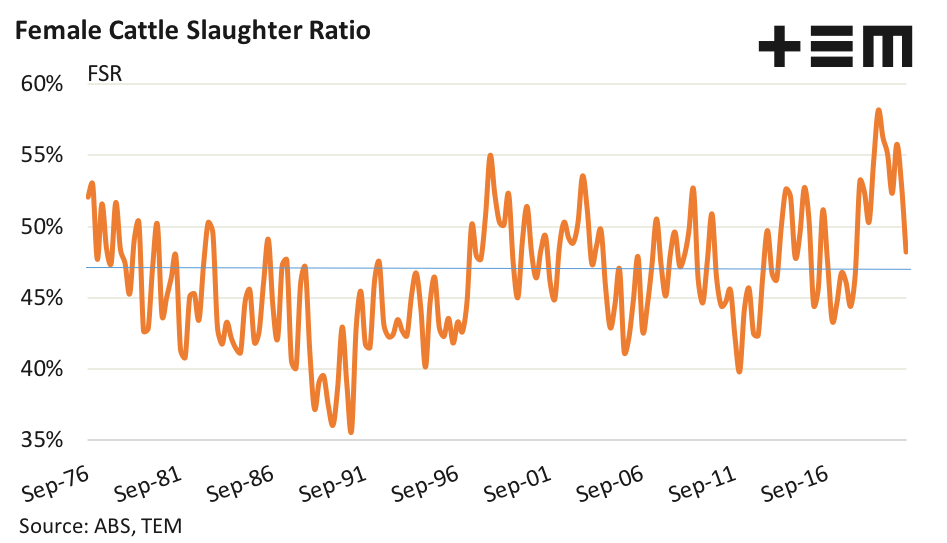It’s a snails pace rebuild

The Snapshot
- The annual average FSR for 2020 came in at 52.3%, down from a record annual average of 56% in 2019.
- Analysis of restocker spreads to the FSR suggests that the quarter one 2021 FSR will come in below 47%, possibly toward the 42-44% region signalling a rebuild phase is underway.
- Analysis of 120 years of rainfall data suggests that after a very wet few seasons we are usually back in drought within 2-4 years. It doesn’t leave much time left to get the Australian herd back nearer to 28-30 million head.
The Detail
Australian Bureau of Statistics (ABS) quarterly cattle slaughter data to the end of 2020 has been released today and it is the first opportunity to see if the herd is in a technical rebuild yet. The threshold to denote rebuild or liquidation is a female slaughter ratio (FSR) of 47%.
Analysis of the annual average FSR to the annual herd change shows a clear relationship between rebuild when the FSR is under 47% and liquidation when it is above 47%. On a quarterly basis the FSR came in at 48.2% for quarter four of 2020, down from 53% in quarter three.
The reduction in females as a proportion of total slaughter highlighted by the easing of the FSR indicated that producers are heading in the right direction for a rebuild but weren’t quite there as of the end of 2020. The annual average FSR for 2020 came in at 52.3%, down from a record annual average of 56% in 2019.
Pleasingly all of the mainland east coast states have begun to head in the right direction for a rebuild to begin during 2021. Queensland has seen its FSR drop from 45.5% to 40.4% over the final quarter or 2020 to record an annual average FSR of 45.1% for the year.
The quarter four FSR in NSW dipped from 53.6% to 48.2%, bringing the annual average FSR there to 51.6%. Meanwhile, the Victorian FSR fell from 68.4% to 62.6%, which puts their FSR at 66.3% on an annual average basis.
Bear in mind that the threshold FSR to denote rebuild/liquidation is different in each state as their reproduction success and calf branding rates vary. Generally speaking, Queensland needs to hold a higher proportion of females in their herd than the southern states so their threshold between rebuild to de-stocking is closer to 40%. The higher proportion dairy cull cows in Victoria also means their FSR remains at a higher ratio.
Analysis of restocker behaviour and the historic correlation between breeding cattle spreads to the FSR suggests that the quarter one 2021 FSR will come in below 47%, possibly toward the 42-44% region. Unfortunately, with the lagged ABS data we will not know for sure until the middle of May. (click here for a short update on the FSR predictive model)
The slow pace of the rebuild is somewhat concerning, given the very good seasonal conditions across the eastern seaboard it would be expected that producers are keen to hold breeding stock and rebuild at a quicker pace. The very strong prices on offer for cattle must be tempting some to continue offering females for turnoff.
The very wet seasons associated with a La Nina across the eastern states often doesn’t last for more than a couple of years. We are already one year into the current La Nina and the Bureau of Meteorology has suggested recently that the impact of La Nina could already be on the wane. Analysis of 120 years of rainfall data suggests that after a very wet few seasons we are usually back in drought within 2-4 years. It doesn’t leave much time left to get the Australian herd back nearer to 28-30 million head.




